I recently returned from a 2 week stint in Bali and what a trip, filled with amazing experiences and of course some enlightening yogic moments. There are too many to share in one post, so I'll start with a few here.
Bali is one of those destinations where everyone seems to have a preconceived notion of what the holiday will bring. But...it all depends on who you talk to. Speaking to those of the yogi persuasion, I heard "how exciting, what a spiritual, special place, the Balinese are beautiful people". Talking to the Aussie born, "what the heck do you want to go there for? It's just full of drunk, fat Australians looking for a party". Others told me Bali was "over commercialised", some Americans asked me "where is that??, Indonesian? Are you sure you'll be safe by yourself". My first 4 days were spent alone in Ubud and yes, I felt very safe.
I've developed a recent love of traveling solo, it's refreshing and empowering. A gentle reminder that everything I need in life is within myself and luckily that doesn't take up any luggage room. I did, despite this, drastically over pack, prepared for every scenario that never occurred (cold nights and mornings, fancy dinners, jungle treks etc.).
�And so, with a litany of other people's stories bouncing around in my head, I headed off for an exciting new adventure. Immediately upon disembarking the plane in Denpasar, I smiled to myself at all the Balinese airplane workers just hanging out by the plane, ready to unload luggage, sitting in a comfortable looking squat position. I've heard stories upon stories about how people in India and other non-Western cultures, squat to rest meanwhile because of our chair bound lifestyles in the West, we can barely hold malasana for more than 2 minutes.
The streets of Ubud are a busy, congested, messy affair. They are cluttered with stray dogs and chickens,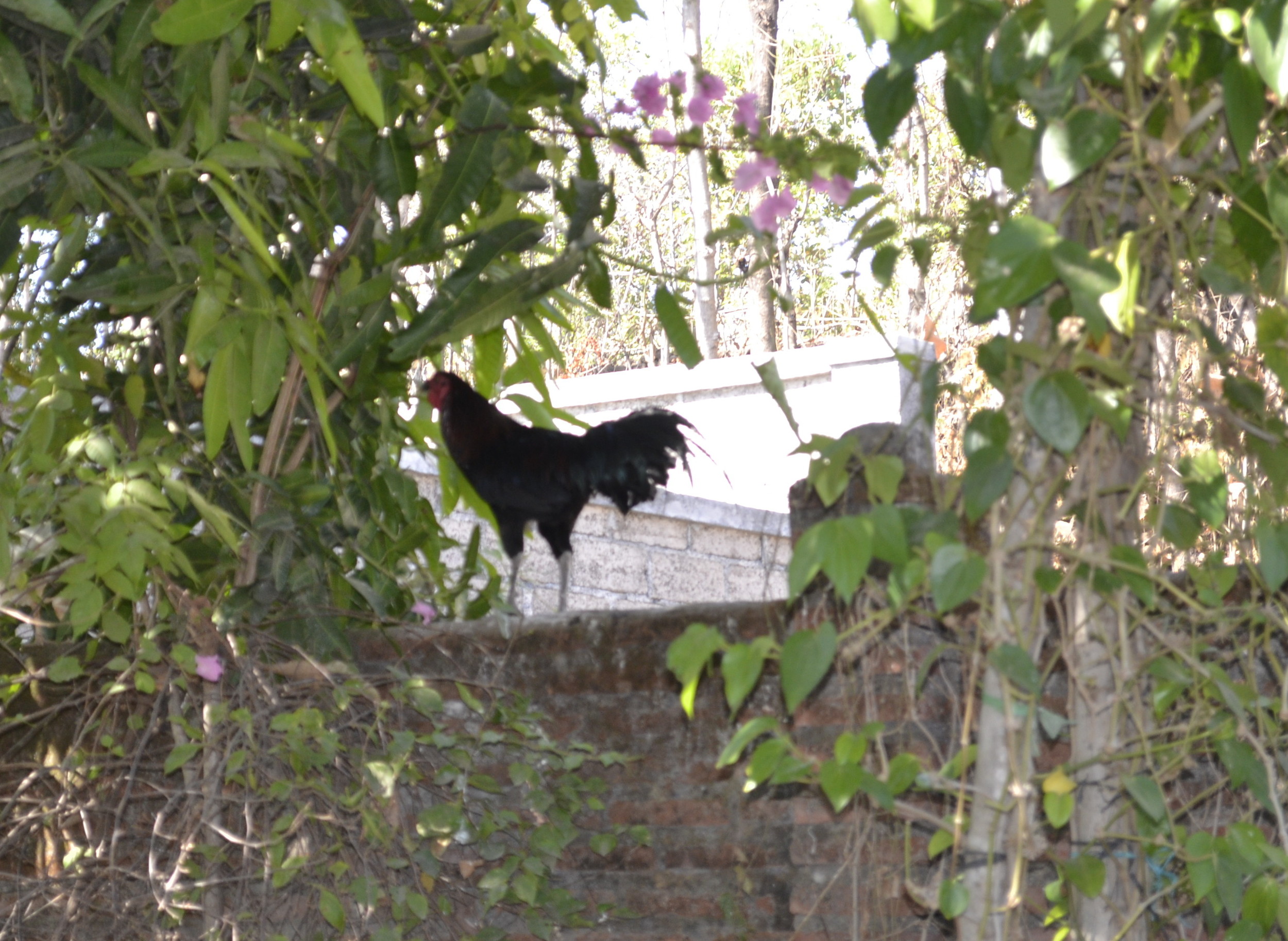 swimming with men smiling and nodding at you as they ask, "taxi, need a taxi miss?" and of course teaming with people squatting outside their shops as they await their next tourist customer. The side walks are broken up pieces of bricks with grates lying over missing slabs of concrete. If you're not watching where you step, you might casually fall into the canals filled with water and trash on either side of the street. The scooters and motorbikes rule the streets, zooming passed the slow moving cars and buses. I was told cars only appeared in Bali 40 years ago so most of the streets were built for push bikes.
swimming with men smiling and nodding at you as they ask, "taxi, need a taxi miss?" and of course teaming with people squatting outside their shops as they await their next tourist customer. The side walks are broken up pieces of bricks with grates lying over missing slabs of concrete. If you're not watching where you step, you might casually fall into the canals filled with water and trash on either side of the street. The scooters and motorbikes rule the streets, zooming passed the slow moving cars and buses. I was told cars only appeared in Bali 40 years ago so most of the streets were built for push bikes. 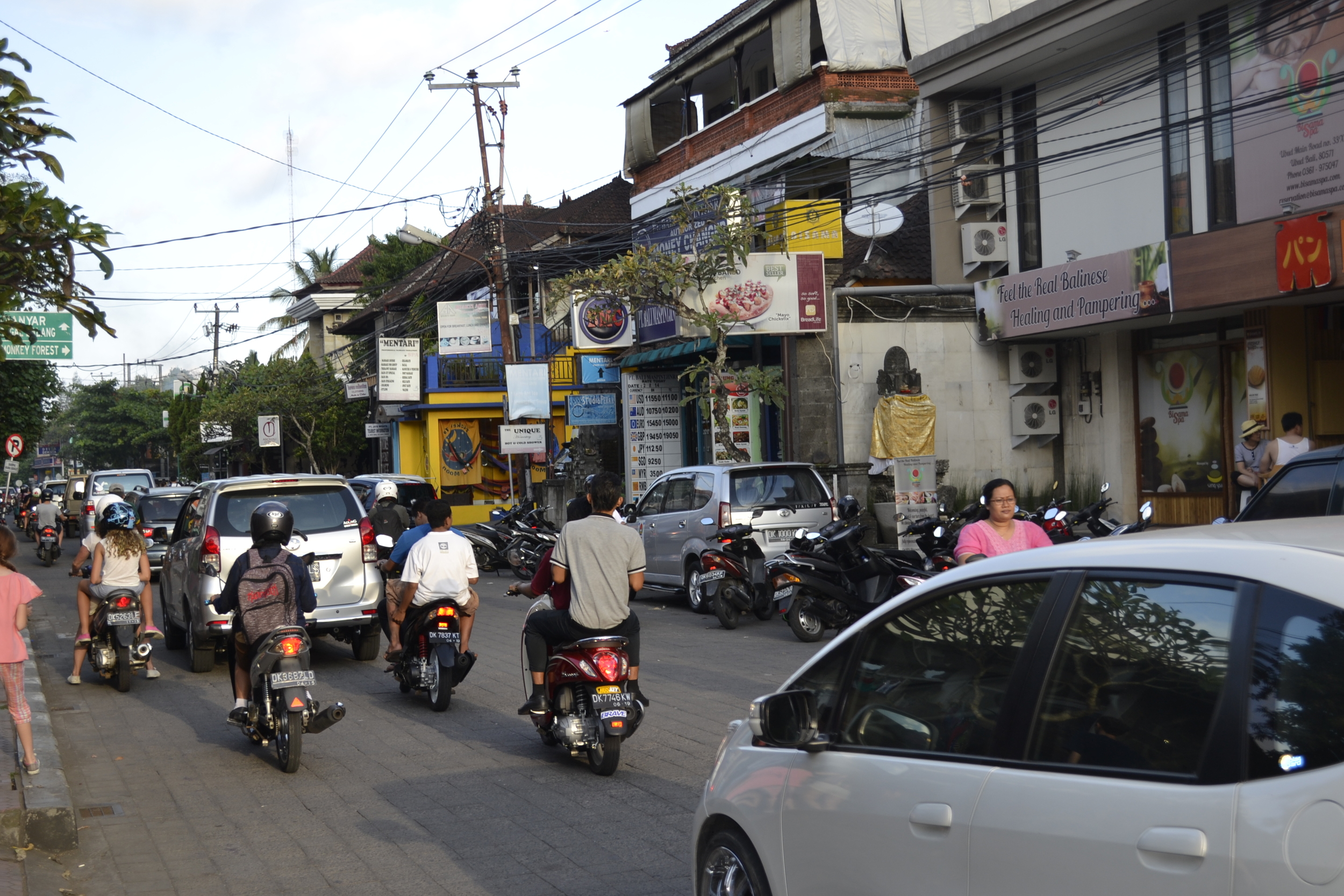 These scooters are a family affair, husband, wife and baby/toddler all piled onto one bike with often a load of rice, a chicken or some other absurd load (according to our standards) precariously balanced on the back.
These scooters are a family affair, husband, wife and baby/toddler all piled onto one bike with often a load of rice, a chicken or some other absurd load (according to our standards) precariously balanced on the back.  The shops, restaurants, bars, hotels, spas are mostly manned by Balinese locals who've come to Ubud to work. Meanwhile the patrons of said venues are mostly white Westerners from Australia, Europe, America etc. Everyone speaks English or some version of English and yes, I agreed with my fellow yogis that the Balinese are a beautiful people.
The shops, restaurants, bars, hotels, spas are mostly manned by Balinese locals who've come to Ubud to work. Meanwhile the patrons of said venues are mostly white Westerners from Australia, Europe, America etc. Everyone speaks English or some version of English and yes, I agreed with my fellow yogis that the Balinese are a beautiful people.
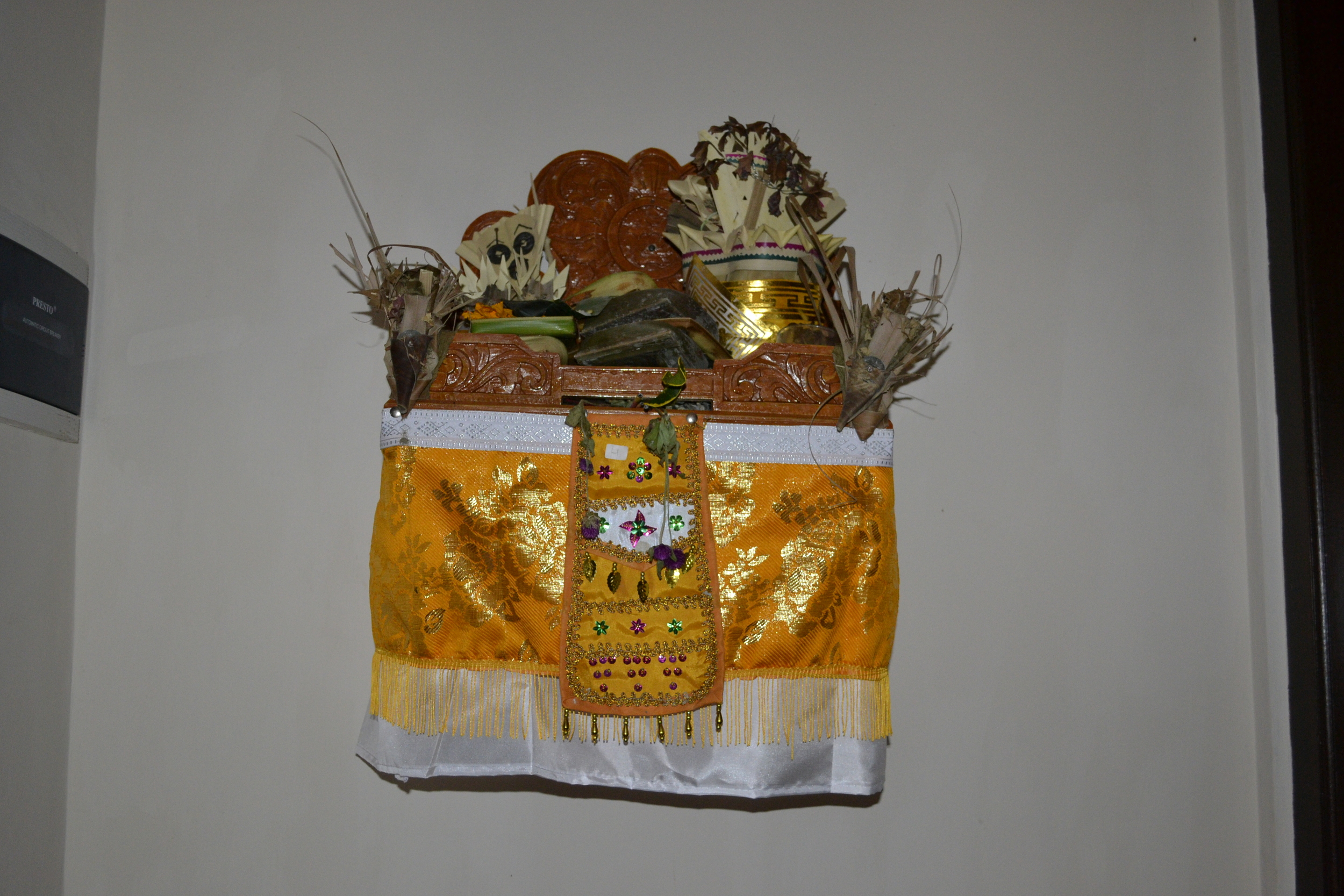
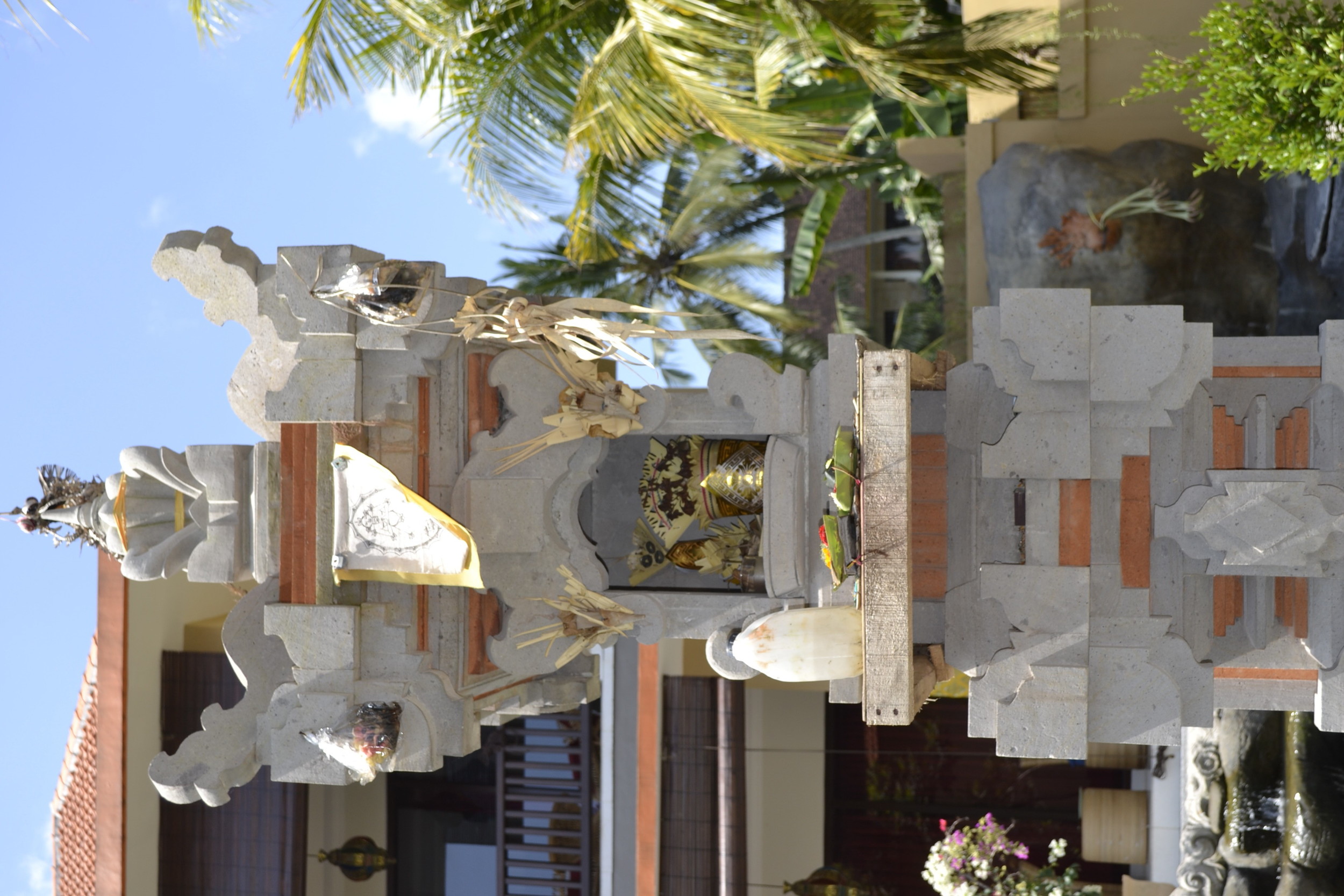
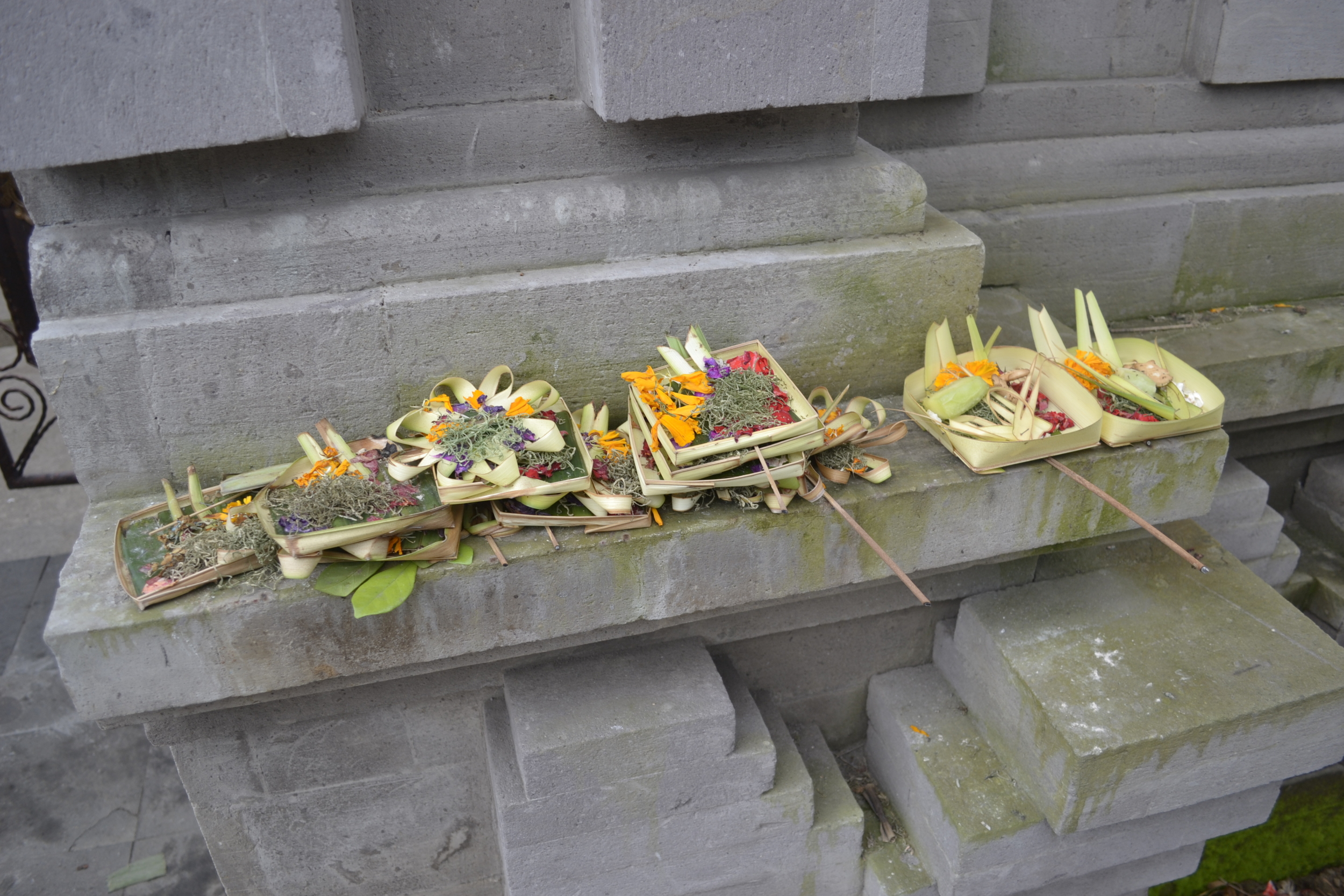
Twice a day if not more often, they make offerings at the temple. There are temples everywhere, in every shop, restaurant, hotel, villa, yoga studio. There are temples outside on the street, there are temples inside each room of the hotel, everywhere. Some are large, glorious, stone structures covered in the traditional black, white and red checkered cloth that represents the Hindu trilogy of Shiva (destroyer), Vishnu (sustainer) and Brahma (creator). Others are smaller, some are painted in gold, some are made of wood, some sit at the top of the village, some in the middle. Each home has a temple and the temple has to be larger than the people's home to honour the gods. These offerings are usually small baskets made of palm, filled with some rice, various flowers, incense and other food that's in season and considered spiritual. The women are in charge of making the offerings and they toil away every day to make hundreds of them in love and service to the divine and knowing full well that the offerings all get burned into the fire at the end of the day. They create something out of love and devotion only for it to be later destroyed. Their days are full of these rituals, done in service to a force greater than themselves.
In our Western brains, it's hard to imagine why someone would waste so much time creating something just to then destroy it. We are taught to do things efficiently, as quickly as possible while still producing an excellent product or end result. We are taught to achieve, to do things in order to get them done. But what then happens to us...we end up running around like chickens with our heads cut off (for lack of a better metaphor). Trying to achieve, competing to be busier than our neighbours, more stressed than our coworkers because being busy and stressed means that we are leading successful, meaningful and productive lives. While on the retreat at Villa Boreh, every night, the villa employees would set the table for dinner while were were finishing our evening yoga practice. So each night when we came to the table, we were enchanted with what we would find.
 There was usually a beautifully done flower arrangement or stone arrangement in the shape or a heart or an OM, there were flowers and palms on the table put into beautifully stunning designs. There were candles on the ground each circled with small stones.
There was usually a beautifully done flower arrangement or stone arrangement in the shape or a heart or an OM, there were flowers and palms on the table put into beautifully stunning designs. There were candles on the ground each circled with small stones.  All of this was done with such love, such care, such grace just to be then destroyed at the end of dinner and repeated again the next night.
All of this was done with such love, such care, such grace just to be then destroyed at the end of dinner and repeated again the next night.
During our last night at Villa Boreh, one of the participants said they wanted to take the palm basket home to make their own offerings at their home alter. What a great idea, I now wanted to keep mine as well. Luckily, before stowing an illegal plant item into our Australian bound suitcases, the wise Nikola (yoga therapist and retreat leader) chimed in and reminded us that the whole point of the offerings is to offer them, to burn them in the fire. To make the offering to the greater forces in our Universe and to then let them go. Ironically, there we were a week into a yoga retreat, wanting to hold on, to preserve instead of letting go...(non attachment??).
So after a week of being back in Sydney, a lot of my resolve to maintain some of these beautiful rituals that make life so rich and sweet has fallen away. Things have returned pretty much to normal, but at least I can now say I'm aware of another way of operating. That our way isn't the only way and might not always be the best. I'm aware of how I'm doing things, is it to finish them or for the love and joy of doing them?

 It's said to be a state where the individual merges with the whole universe and we realize that we are part of the whole, connected and not separate. I've read about, heard tales about and dreamed about what samadhi must be like, what it must feel like, but always thought it was more of an idealized state that only sages and serious yogis who live in caves, or at least only yogis who live in India, reach. Yet here I was, at the bank in Paddington, Australia, looking through the plastic partition at a man who had experienced samadhi.
It's said to be a state where the individual merges with the whole universe and we realize that we are part of the whole, connected and not separate. I've read about, heard tales about and dreamed about what samadhi must be like, what it must feel like, but always thought it was more of an idealized state that only sages and serious yogis who live in caves, or at least only yogis who live in India, reach. Yet here I was, at the bank in Paddington, Australia, looking through the plastic partition at a man who had experienced samadhi.







